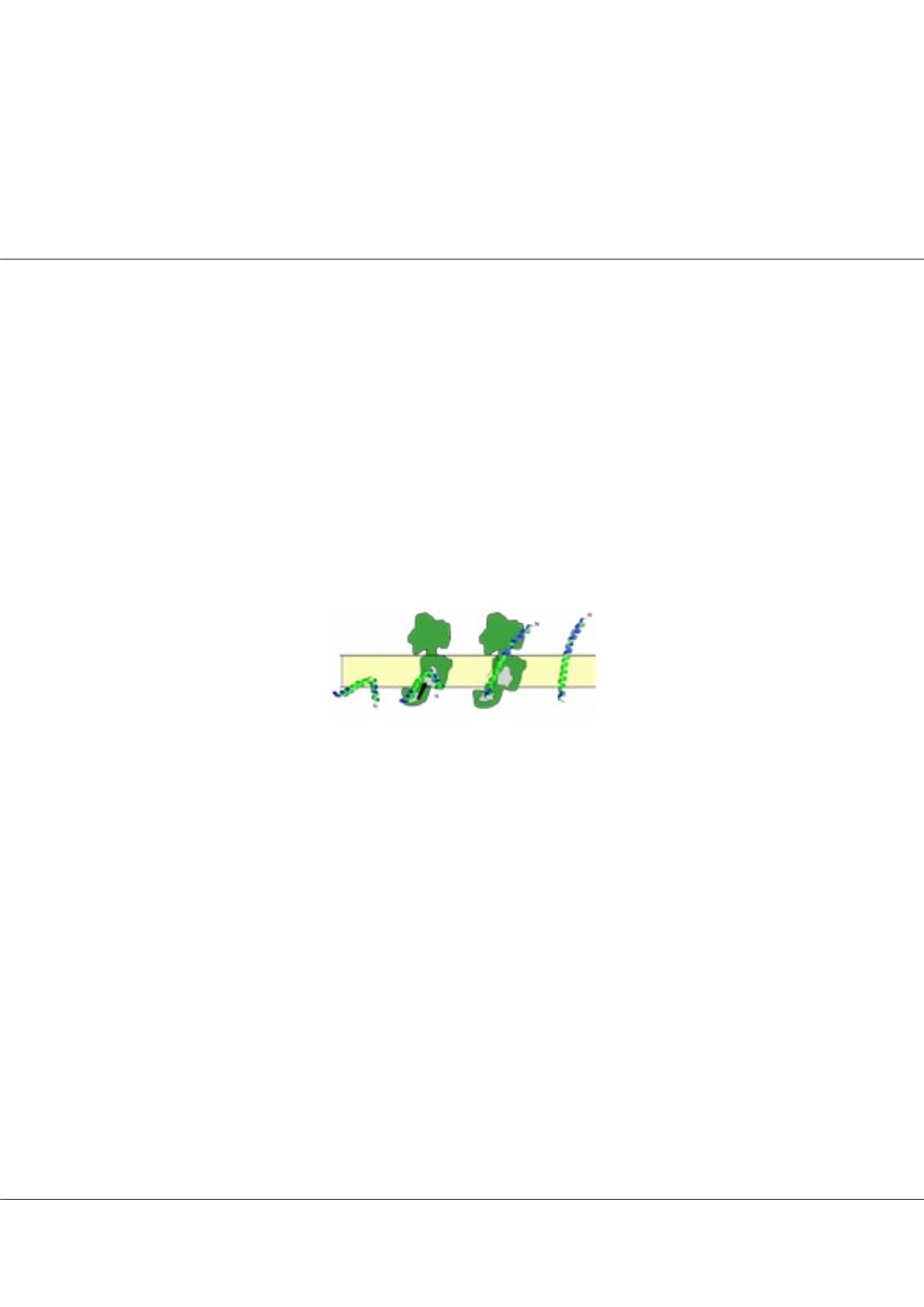

Page 56
Notes:
conferenceseries
.com
Volume 10, Issue 8 (Suppl)
J Proteomics Bioinform, an open access journal
ISSN: 0974-276X
Structural Biology 2017
September 18-20, 2017
9
th
International Conference on
Structural Biology
September 18-20, 2017 Zurich, Switzerland
The dynamics of a protein during its insertion into a membrane
Andreas Kuhn, Dirk Spann
and
Maximilian Haase
University of Hohenheim, Germany
M
ost membrane proteins are inserted co-translationally by the Sec-translocase or the YidC/Oxa1/Alb3 insertases. The
folding of these proteins occurs within the membrane during the interaction with the insertases. We have purified
and reconstituted YidC, the membrane insertase of
Escherichia coli
. The protein spans the membrane 6 times, and the
recently solved structure shows a hydrophilic cavity and a greasy slide between the transmembrane segments TM3 and TM5.
Hydrophobic residues of TM3 and TM5 interact with the substrate, with a prospective transmembrane segment of an inserting
membrane protein as documented by disulfide crossinking experiments. The membrane insertion process can be studied with
the reconstituted vesicle system. The purified substrate proteins are solubilized in 10% isopranol or kept unfolded with urea
or GuHCl. When the substrate proteins are added to the proteoliposomes by dilution 1:100, they rapidly bind to YidC and
become membrane inserted within 2 msec. FRET-based kinetic measurements show that the substrate proteins approach YidC
to a close distance during the insertion event. Time-resolved fluorenscence anisotropy shows that the periplasmic domain
of YidC moves when a substrate protein was added. This suggests that both the insertase and the substrate protein undergo
conformational motions.
Biography
Andreas Kuhn has his expertise in protein folding of membrane proteins. Studies include reconstituted systems with bacterial translocases and insertase, as well
in vivo
studies with
Escherichia coli
. For biophysical experiments, the membrane proteins are purified and their folding is monitored spectroscopically in real time
after their addition to liposomes. Andreas Kuhn obtained his PhD from the Universities Basel and Freiburg im Breisgau 1982. After a Postdoc at UCLA with Bill
Wickner he continued at the Biozentrum Basel from 1986 to 1989 and accepted a professorship at the University Karlsruhe. Since 1996 he is at the University of
Hohenheim in Stuttgart.
Andreas.Kuhn@uni-hohenheim.deAndreas Kuhn et al., J Proteomics Bioinform 2017, 10:8(Suppl)
DOI: 10.4172/0974-276X-C1-0100
Figure1:
YidC-mediated insertion of the Pf3 coat protein


















